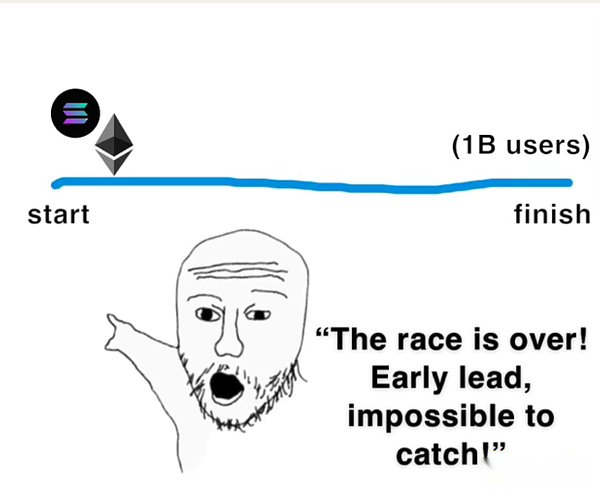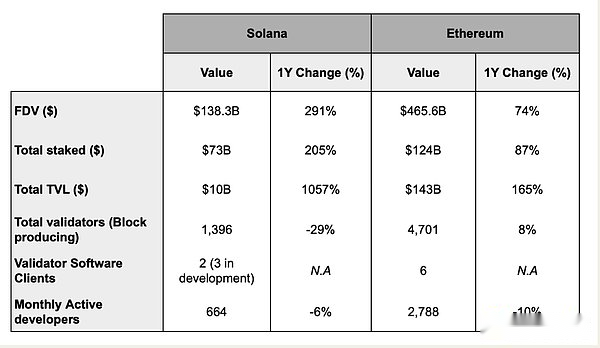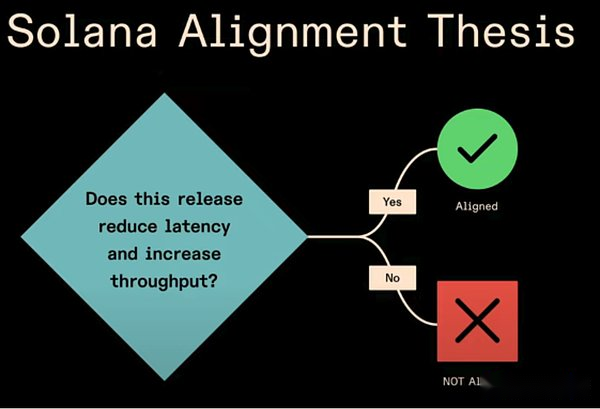
Author: flow Source: On Chain Times Translation: Shan Oppa, Bitchain Vision
introduction
Restaking (Restaking)It is a simple but powerful concept: it allows pledged assets to be reused (or re-staked) in multiple decentralized services, and is also called by JitoNode Consensus Networks (NCNs).
This approach brings many benefits.Most notably, it enhances the security and integrity of decentralized services, as these services can leverage the economic security of main chain L1 without investing a lot of resources to design their own (and possibly more vulnerable) security models.From the perspective of the pledger, this methodMaximize capital efficiency, because a single asset can guarantee multiple decentralized services at the same time and may achieve higher return on capital.
The impact of this concept is far-reaching, and many industry leaders view restaking as a disruptive innovation that can accelerate progress by building a safer, flexible, and scalable blockchain environment.Even though this field is still in its early stages and experimental stages, re-staking has rapidly developed into one of the largest sectors on Ethereum based on total lockout (TVL): from just $1.4 billion at the beginning of the year to $21.6 billion at the current level..

So far, restaking has been mainly concentrated in Ethereum because it is considered the most economically secure and most adopted PoS blockchain.However, with Solana’s strong growth in this bull market (especially compared to the more stagnant activity on the Ethereum mainnet, many of which have moved to L2 solutions such as Base), a reasonable question follows:Does Solana also have a compelling prospect of re-pled?
This article will explore this issue from multiple perspectives and analyze potential market opportunities resolute on Solana.Let’s dive into it in depth.
1. Solana is mature enough to support re-staking
In order to make re-staking feasible, the basic chain needs to have strong economic security.This is why Ethereum has been mainly chosen for re-staking so far.Up to now, more than 34.3 million ETH (worth approximately US$124 billion) have been pledged on Ethereum, with 4,701 block production verification nodes, six different consensus clients, and are the oldest and most reliable blocks.The reputation of one of the chains has become a reasonable basis for building re-staking.
However, humans always tend to project the present state into the future, assuming the status quo will remain unchanged and believing that Ethereum will always dominate.But history tells us, especially in the frontier fields of technology,Creative destructionThe power of this assumption may be broken.Think about how Yahoo, which was once considered unshakable, was surpassed by Google in the search engine field; similarly, Apple’s rise in personal computing has replaced IBM, which was once regarded as the “endgame”.

Along this logic, we might need to ask ourselves:Is Ethereum at a similar historical moment?Is it necessary to build the entire restaking system only on Ethereum?
This issue is particularly important because new asset issuance is leaving the Ethereum main network and moving towards other L1s (such as Solana) or L2s (such as Base), while the future direction of Ethereum is lacking in clarity (see the link for details for this article.overview of the current status of Ethereum).If we agree that restaking is a disruptive technology, we should open up the choice and extend it to other L1s, giving developers the freedom to choose on which consensus layer to build a trust foundation.
In this context,Solana is a clear candidate for restaking.As the leading L1 in this cycle, Solana has achieved significant growth, maturity and safety.As of this writing, about 65% of SOL circulation supply was pledged, with a total value of approximately $73 billion (a significant increase from $24 billion a year ago).In addition, the Solana network has nearly 1400 block production verification nodes, as well as two different client validators, and three new client validators are under development (Firedancer, Sig and Agave).

In addition, Solana has extremely low cost and extremely fast speeds, and has gained wide adoption among users and developers.It’s in the crypto fieldThe fastest chain for application development, achieved real organic growth, and successfully overcome the “cold start” problem and established a strong network effect.All of this shows that Solana has a broad prospect and is mature enough to support the implementation of restaking.

2. The possibility of restaking on Solana is greater than that on Ethereum
Ethereum has pioneered the field of smart contracts, but its high costs limit the scope of developers building applications on the chain.Solana’s design, by contrast, provides developers with greater freedom to achieve a wider range of creative expression on L1.Therefore, it can be said that the design possibility of restaking on Solana is greater than Ethereum.
first,Solana’s low transaction and computing costsLower the entry threshold for node consensus networks (NCNs).Unlike Ethereum’s high fixed-cost restriction players, Solana supports smaller, more cost-effective deployment of NCNs that can be tailored to specific use cases.This allows more services to be outsourced, thereby reducing the scope of direct applications and increasing interoperability within the ecosystem.
Additionally, NCNs on Solana can handle more complex operations with higher code density without sacrificing on-chain computing power (such as EigenLayer design on Ethereum).This makesOn-chain verifiability, on-chain reward allocation, on-chain data releaseIt is possible, while enhancing the flexibility and robustness of re-staking.Although Ethereum is a “test product” of restaking, in the long run, restaking on Solana has more potential and can support the construction of more practical use cases and applications.
Furthermore, Solana isLiquidity re-staked tokens(Jito calls VRTs, i.e. “Volume Certificate Tokens”) also have significant advantages.On the one hand, Solana’s low cost can significantly reduce the operating costs of liquid re-staking token providers such as Kyros.In a business model where small yield gaps affect overall profitability, this cost advantage increases profit margins while creating space for more competition and the formation of a diversified ecosystem, including providing a diversified VRT restaking strategyand more flexible penalties.On the other hand, liquidity re-stakes on Solana are more affordable, and low transaction fees lower the threshold, making it easier for them to use liquidity re-stakes tokens in various DeFi applications without overdoing it.Worry about the cost.This is an important factor driving long-term capital adoption.
3. Re-staking can bring new innovations to Solana
Solana’s vision has always been to become a global computing interface for free to build for everyone.In the process of achieving this goal, its core is alwaysImprove the throughput of the basic chain and reduce latency.

This is a clear and reasonable vision.However, the laws of physics cannot be violated, and it is impossible for us to increase throughput by 10 times or reduce latency by 10 times in a short period of time.This requires a lot of resources and efforts to achieve orders of magnitude improvement.Therefore, even if it cannot be achieved immediately, there is a consensus gradually forming:Not everything has to happen on L1.This can be verified from recent discussions around “network extensions”.
In this regard, it can be considered that re-staking can beExtend the Solana networkand open up new design possibilities when promoting innovation in the “network scaling” program.While it is not clear how or form of restaking will be implemented, it is likely to evolve into a powerful infrastructure tool for scaling the network.Take a case as an example.SonicClaiming to be the first sovereign game L2 layer built on HyperGrid (the horizontal scaling framework for Solana virtual machines).Sonic plans to leverage Jito restake to improve the security and efficiency of its SVMs, building a multi-purpose ecosystem for gaming, DeFi and other applications.
In addition, the hard guarantees provided by restaking can bring practical use cases to Solana network reliability.For example,Jito TipRouter NCNIn development to decentralize and improve the security of MEV prompt allocation on Solana.For example, Temporal’s agreementNozomiIt is planned to use Jito restake to redesign Solana’s transaction microstructure to solve problems such as sandwich attacks, slippages and transaction timeouts.This is consistent with Solana’s long-term vision and promises to significantly improve the user experience, ensuring that the chain is not only fast and cheap, but also reliable and easy to use.
In addition to high performance and strong metrics, Solana also demonstrates what it carriesBeginner spirit.Successful projects such as Jito, Kamino, Jupiter and Helium have emerged over the past few years, but this is just the beginning, and the number of projects chosen to build on Solana continues to grow.
If Solana is becoming the first choice chain for developers, then re-staking will also occupy a place here.This can extend Solana’s economic security to key services in the ecosystem, such as oracles, bridges and sequencers, which, while often operate outside the base layer, are equally critical.Although smart contracts and their interactions themselves benefit from Solana’s security, these other components often require their own economic security models.This often means a lot of capital needs to be raised to incentivize validators, or compromise on security.
Therefore, it may happen that smart contracts are secured on the chain and perform correct calculations, but rely on oracles that provide incorrect data.This constitutes a paradox: if other parts of the system do not have equal security, even the strongest level of smart contracts will not help the overall security and flexibility of the system.Because of this, it is reasonable to use Solana-focused services to restake Solana.For example,Switchboard(a permissionless oracle network on Solana) is working with Jito to ensure the reliability of its data flow.If successful, this approach will significantly improve the security and reliability of the Solana network.
4. Re-staking Optimization of Capital Efficiency of DeFi Users on Solana
Re-staking provides Solana users with higher annualized rate of return (APY) opportunities than pure staking.Since one of the main goals of DeFi users is to optimize capital efficiency, re-staking becomes an attractive option.It enables DeFi users to unlock new earning opportunities on Solana without additional capital.For example, instead of buying liquid staking tokens (LSTs) to earn income through SOL and use them in DeFi, users can purchase liquid staking tokens (VRTs) to earn higher APYs while still being able to do so in DeFiFree operation in.
It should be noted that re-staking is also accompanied by additional risks, and users need to take this into consideration.However, if managed properly, restaking can provide an interestingOpportunities for balancing risk and reward.
Judging from the growing DeFi on Solana, we can speculate that having a mechanism to optimize capital efficiency will attract a large amount of liquidity in the long run.In fact, DeFi activity on Solana is surging.

Over the past year, its total locked-in volume (TVL) has grown from less than $1 billion to more than $10 billion, and its growth momentum remains strong.In addition, activity on Solana networks is also on the rise, which can be seen from the surge in network expenses.Recently, the online weekly fee revenue has exceeded $13 million, compared to less than $1 million a year ago.

DeFi on Solana is just getting started.From a user’s perspective, this means that there will be an increasing demand for solutions that optimize capital efficiency, further demonstrating the potential of Solana’s restaking.
Conclusion
Solana’s restaking is still in its early stages of trial, but it represents aA promising narrative, and many interesting application scenarios have appeared.As the ecosystem continues to mature and develop, the argument for re-staking will become more powerful.If we assume that Solana can gain a market share comparable to the Ethereum restaking market in the long run, then the market opportunity will be huge.
Currently, Solana’s resolution infrastructure is dominated by two protocols:SolayerandJito (Re)staking.
•SolayerAs the first pioneers to enter the market, a complete restaking stack has been built and over $350 million in TVL has been achieved.
•JitoIt seems that it is more likely to lead this trend in the long run.With a strong technical foundation, the highest TVL in the Solana protocol, and a clear vision, Jito has established its position as a leader in the Solana ecosystem.Its flexible re-staking stack has built-in integration of liquid re-staking tokens (VRTs) since day one and supports multi-asset types, which further enhances its potential.
From the user’s perspective, this shows that there are significant opportunities in the Jito liquidity re-staking market.If you are interested in this emerging trend, you can refer to this article’s overview of the main tradeoffs between different VRTs.

Anyway, I want to end it with a sentence from Freeman Dyson:
“When great innovation comes, it almost always comes in a confusing, incomplete and confusing form. Even for the discoverer, it is only partially understood; for others, it is a complete mystery.. Any speculation that doesn’t seem crazy at first glance is destined to be hopeless.”
This sentence perfectly describes the current state of Solana re-stake:Early, hopeful, and fertile ground for new opportunities for DeFi.







